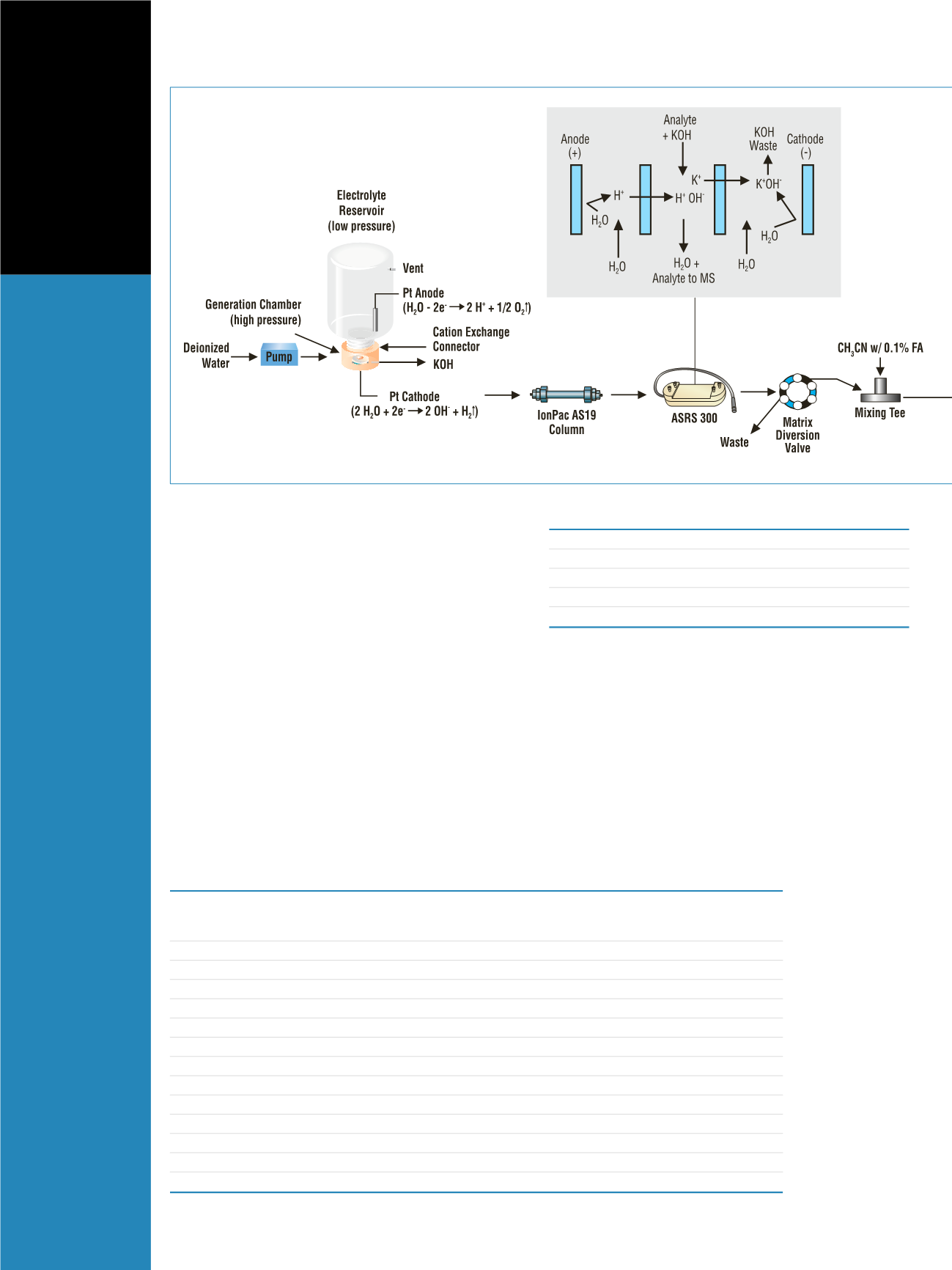

In addition, a matrix diversion valve was placed in
line prior to the mass spectrometer. This valve functions to
divert the high sample matrix waste from the MS source,
prolonging the time in between cleanings. Acetonitrile was
teed into the eluent stream after the matrix diversion
valve. The acetonitrile had two main purposes: to assist in
the desolvation of the mobile phase and to act as a make-
up flow when the IC eluent was diverted to waste.
Mass Spectrometry
MS analysis was carried out on a TSQ Quantum Access
™
triple stage quadrupole mass spectrometer with a heated
electrospray ionization (H-ESI) probe. The MS conditions
used are shown in Table 3.
Figure 1: Flow schematic of the IC-MS/MS system
Skimmer
Q1
Q3
CE
Tube Lens
Offset
Scan Time
Analyte
(m/z)
(m/z)
(V)
(V)
(V)
(s)
MCAA
93.01
35.60
10
26
0
1.25
MBAA
136.99
79.09
12
33
0
1.25
DCAA
127.02
83.20
11
26
0
1.25
DBAA
214.80
79.20
24
33
0
1.25
BCAA
171.00
79.20
35
44
0
1.25
TCAA
161.06
117.10
10
69
0
1.60
BDCAA
79.00
79.00
15
30
0
1.60
DBCAA
206.74
79.13
15
30
0
2.50
TBAA
250.70
79.10
25
26
0
2.50
MCAA-ISTD
94.01
35.60
10
26
0
1.25
MBAA-ISTD
138.00
79.09
12
33
0
1.25
DCAA-ISTD
128.01
84.20
11
26
0
1.25
TCAA-ISTD
162.06
118.10
10
69
0
1.60
Table 4. MS conditions for the various HAAs and internal standards
Ion source polarity:
Positive ion mode
Spray voltage:
4000 V
Sheath gas pressure:
40 units
Auxiliary gas pressure:
15 units
Capillary temperature:
270 °C
Table 3. Mass spectrometer conditions
Individual standards were infused into the mass
spectrometer to determine optimum tube lens settings and
collision energies for the product ions. Table 4 describes
the MS conditions for specific HAAs and internal
standards.



















